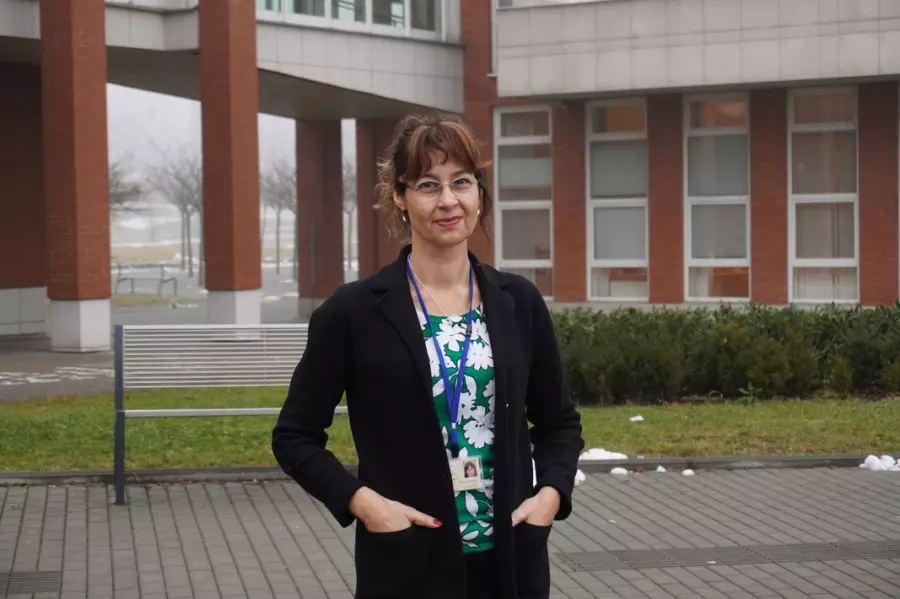
Dina Frutos-Bencze je docentkou oboru ekonomie a podnikání na Saint Anselm College v New Hampshire, USA. Zimní semestr 2021/2022 strávila díky Komisi J. Williama Fulbrighta na Univerzitě Hradec Králové, kde vyučovala dva předměty a společně se svými českými kolegy také zkoumala modely spolupráce ve výzkumu a vývoji mezi různými středoevropskými a východoevropskými vysokoškolskými institucemi během pandemie.
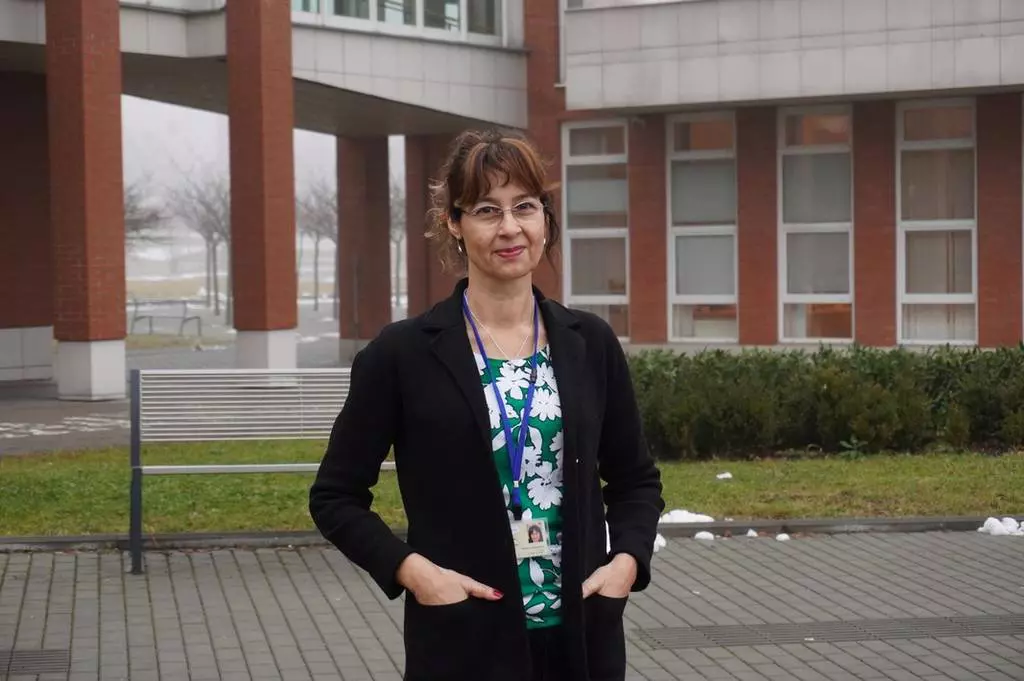
Source: Univerzita Hradec Králové
Dina Frutos-Bencze has been monitoring the impact of the current situation on job satisfaction, gender roles and organizational culture in the Czech Republic. Dina was born in Prague, but she first moved to Costa Rica together with her parents when she was three years old, and then to the U.S. Returning to the country of her roots for a longer period of time has given Dina an opportunity to finally explore and experience Czech culture and traditions. Even though she looks forward to reuniting with her children and husband who could not join her for this adventure, Dina does not hesitate to say that: "These past three months have been very productive, enriching and truly one of the best times in my life."
What was her experience?
I was born in Prague to a Czech mother and a Costa Rican father who was studying in Prague. Even though we left when I was about three years old, Czech is not completely foreign to me and I understand and can speak it relatively well, but I certainly do not dare to write it!
The possibility of living in Prague was extremely appealing, but I wanted to share my expertise and knowledge with an institution outside of Prague because often it is more challenging for them to get international scholars. Thus, I was extremely pleased that the Faculty of Informatics and Management (FIM) at the University of Hradec Králové agreed to be my host institution for one semester. So far teaching and doing research has been very rewarding. My colleagues are very welcoming and it’s a pleasure to explore the city by bike even in the snow!
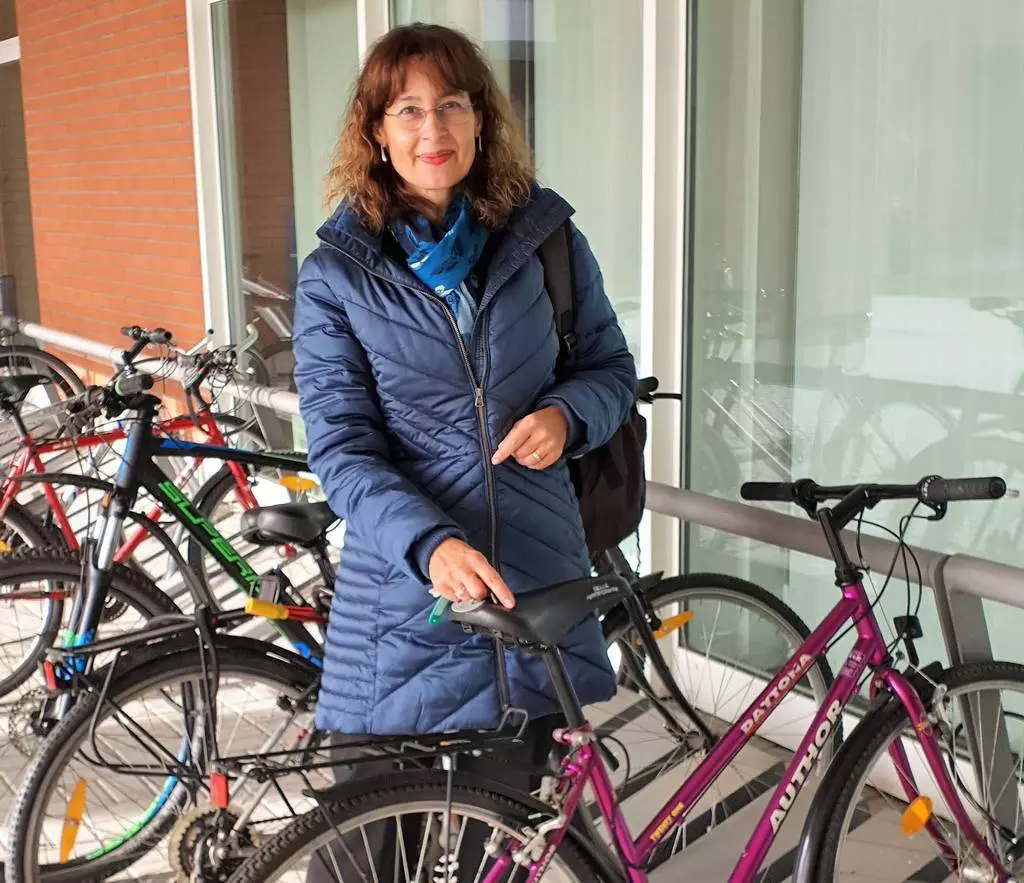
Photo 2: Dina in front of her host institution in Hradec Králové, October 2021. (Dina, dressed warmly, poses for a picture with her bright pink bike attached to a bike rack in front of a red-brick building.)
Unfortunately, the semester and my stay are almost over. My graduate students in the “Managerial Methods” course successfully completed their X-Culture project, which required them to work in global virtual teams with real businesses to help them solve some of their challenges. Undergraduate students in my “Intro to Social Innovation” are completing their solution prototypes for the design thinking challenge they proposed. I’ve enjoyed a lot interacting with my students and learning from them all kinds of historical and cultural facts and anecdotes. In terms of research, my Czech colleagues have been very open to work collaboratively with me. Right now, we have two different projects underway. Hopefully one of them (“R&D and Innovation at Višegrád higher-ed institutions during COVID-19”) will be completed by the time I leave. I will continue to work virtually on the other project about job satisfaction, gender and organizational culture during COVID-19 in the Czech Republic.
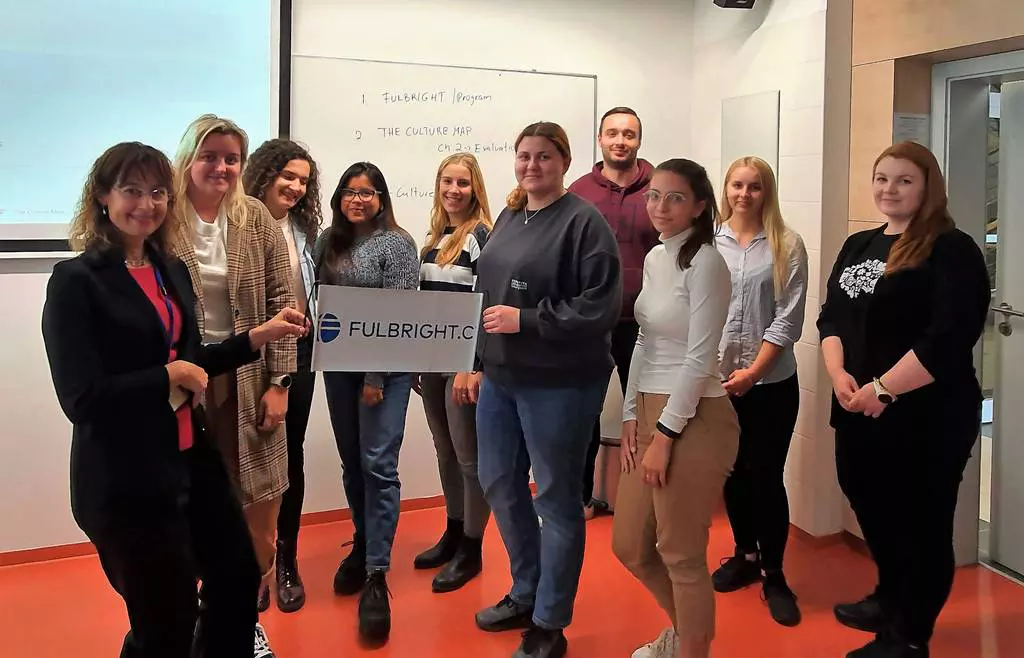
Photo 3: Dina together with her students, November 2021. (Dina poses for a group picture with her Czech students at University of Hradec Králové.)
The fall was really nice and sunny in the Hradec Králové area and pretty much everywhere in the country. I did not want to travel outside the Czech Republic because I wanted to explore the country as much as I could. I made several trips to Prague (which is an hour and 40 minutes by train). Travel by train is very convenient from Hradec Králové. I ventured to South Bohemia to Tábor and Český Krumlov. Český Krumlov is a major tourist destination. Back in October the effects of Covid-19 were quite noticeable by the many closed shops and restaurants and the small crowds of tourists. The castle is relatively unique in that it is surrounded by a moat filled not with water, but with bears. The castle and its gardens are definitely worth visiting. There is also a museum and gallery dedicated to the painter Egon Schiele, who lived in the town.
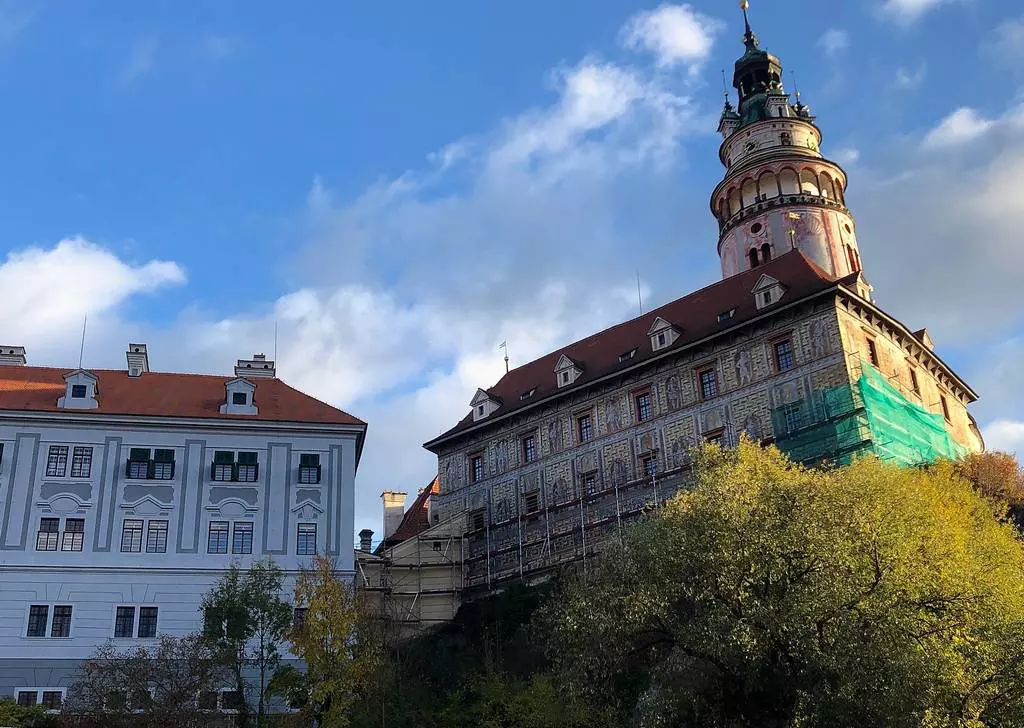
Photo 4: Trip to Český Krumlov, October 2021. (View at Český Kumlov Castle and Renaissance Chateau, partly under reconstruction.)
Earlier in the fall, I also managed to explore Velké Bílovice in South Moravia for the “Tradiční krojované hody” and wine harvest. The town is close to the beautiful Lednice castle. I also ventured to Mělník, Mladá Boleslav and Liberec. In the Královéhradecké kraj and Pardubický kraj there are also many beautiful towns and places to visit such as Litomyšl, Třebechovice pod Orebem, and of course Pardubice. Kladruby nad Labem is known as the home of the Kladruber horse breed. The village with the surrounding landscape is a UNESCO World Heritage Site.
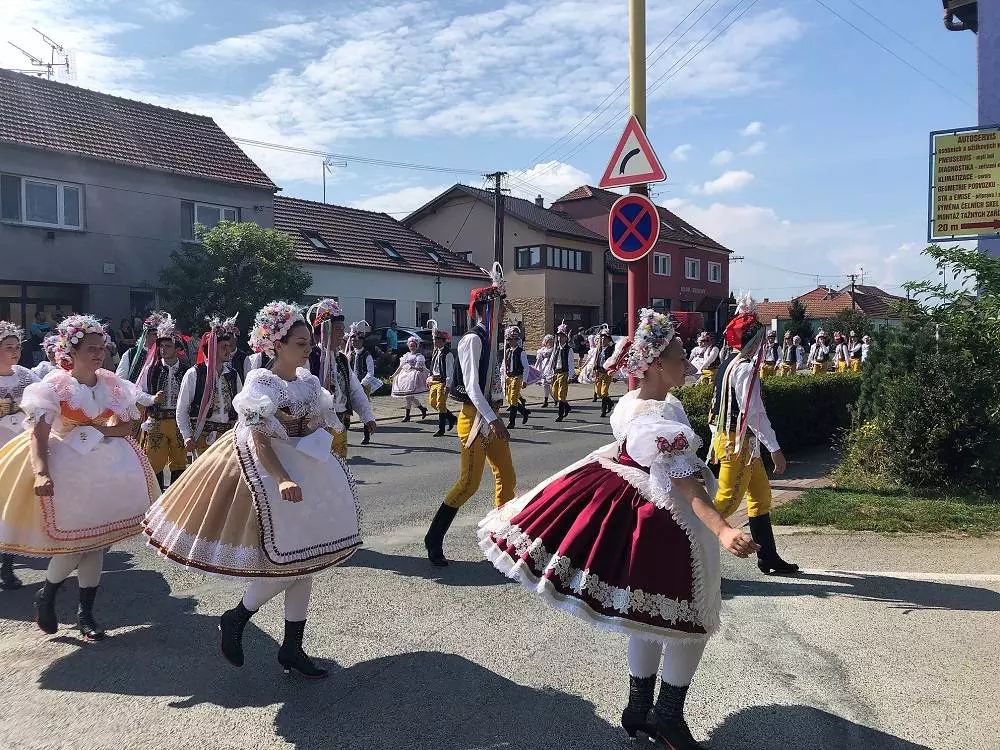
Photo 5: Traditional wine festival in Velké Bílovice, South Moravia, September 2021. (People dressed in traditional Moravian folk costumes march and dance during an outdoor parade.)
I learned a little more about Czech history, culture and language on each of these trips. These past three months have been very productive, enriching and truly one of the best times in my life.
Článek vyšel v prosinci 2021 v rámci blogu Komise J. Williama Fulbrighta.
- Autor článku: ne








































